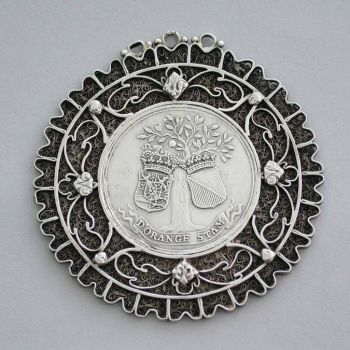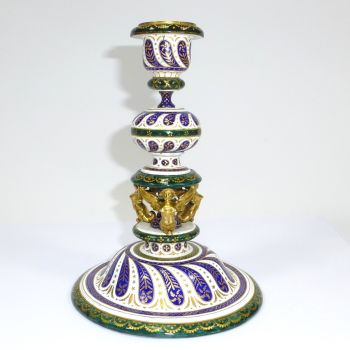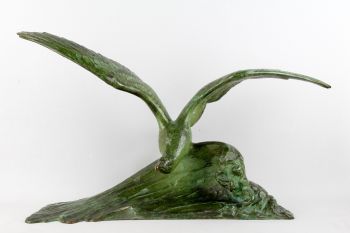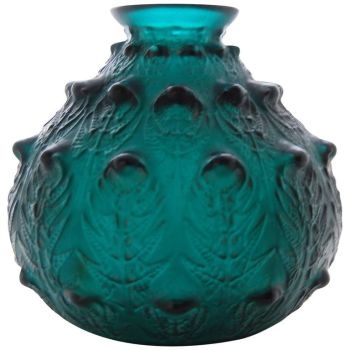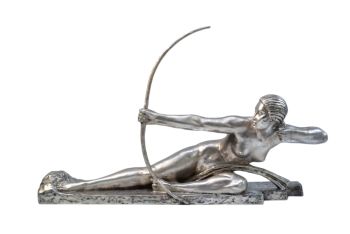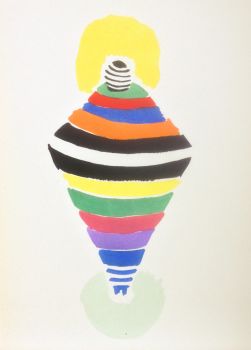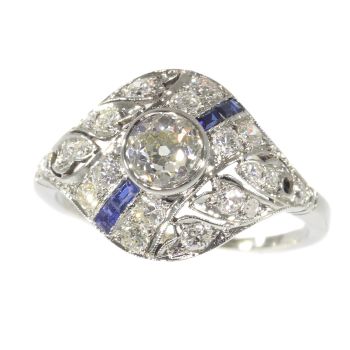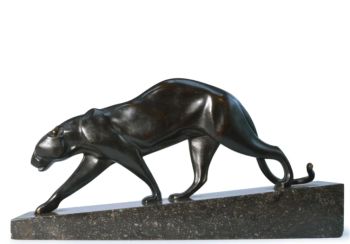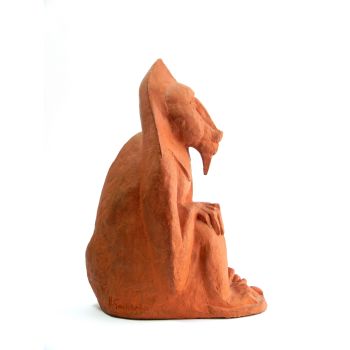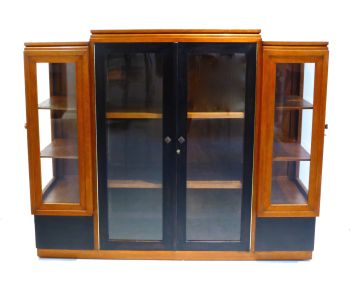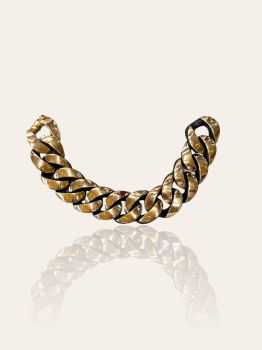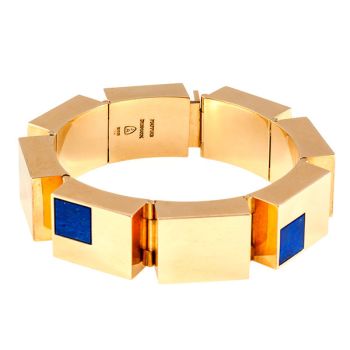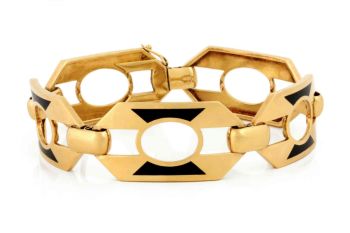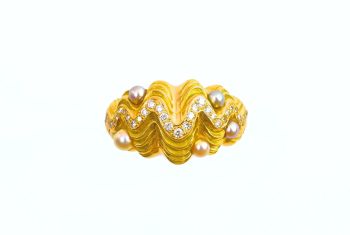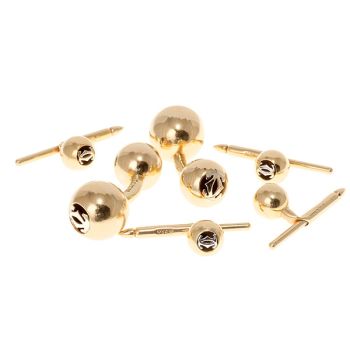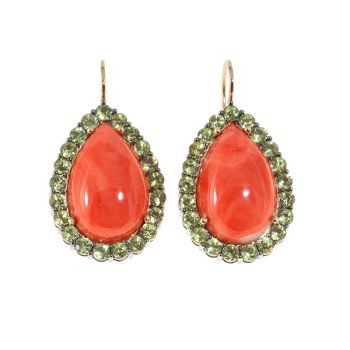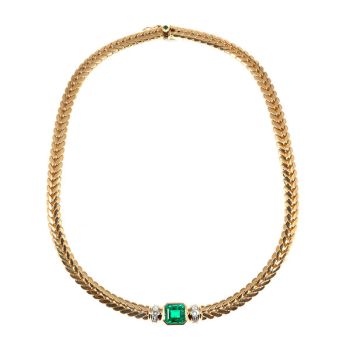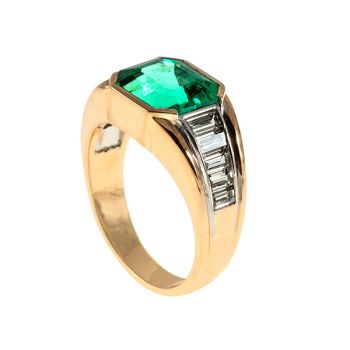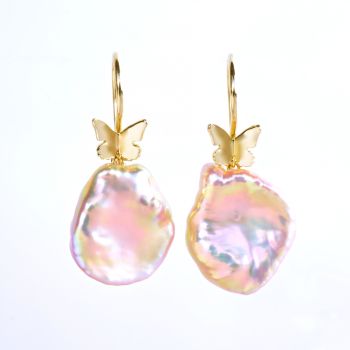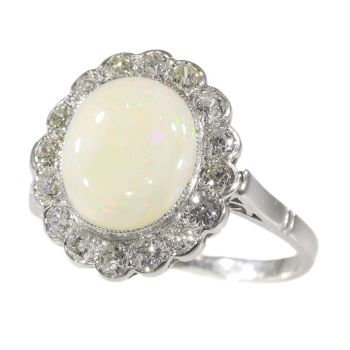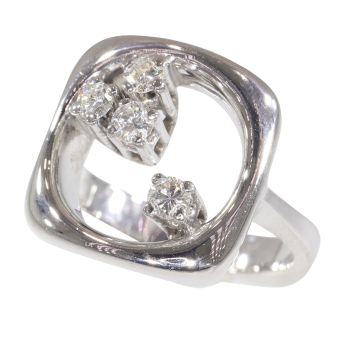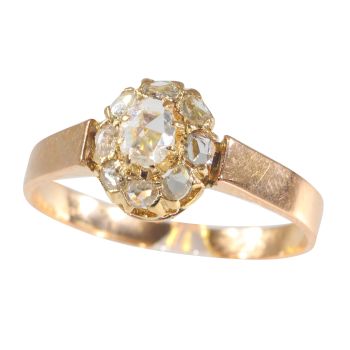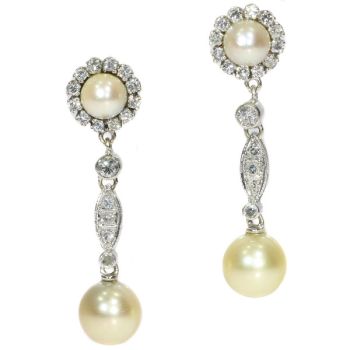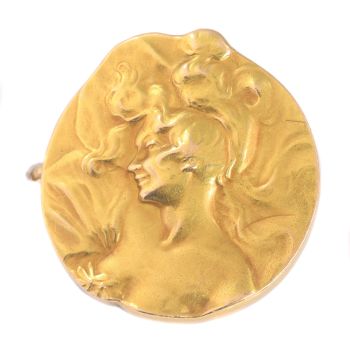Bracelet Art Déco en perles de corail émaillé, 4 rangs 1920
Artiste Inconnu
Or jaunecorailOrcorail rouge
€ 8.500
Adin Fine Antique Jewellery
- Sur l'oeuvre d'artArt Deco enameled coral beaded bracelet, 4 strands.
This Art Deco bracelet ascends from customary antique jewellery to the level of applied arts due to its rare combination in craftsmanship of goldsmithed 18K yellow gold, of delicately engraved coral beads and of a black enamelled finish. Four coralstrands guide you to a Japanese garden with a central round coral bead with tulip engravings, which disguise the jewel's closure. Two engraved columns followed by black enamelled convex portals guard this gem. Being a strong representative of Japonism in the 1920's, this bracelet is eagerly waiting to serve its next Geisha.
Antique jewelry object group: flexible bracelets/bangles
Country of origin: Although it does not carry any legible control marks we believe this to be of French or Belgian origin.
Style: Art Deco
(more info on styles)
Style specifics: Abstract motives and geometrical forms are quite typical for the Art Deco period.
Period: ca. 1920
(events and facts in 1920)
Source of inspiration: Japan
Theme: Japanese style engravings in the coral
Material: 18K white gold
(more info on precious metals)
Technique: Enamelling is an old and widely-adopted technology. The ancient Egyptians applied enamels to pottery and stone objects. The ancient Greeks, Celts, Russians, and Chinese also used enameling processes on metal objects. Enamel is the colorful result of fusing powdered glass to a substrate by firing, usually between 750 and 850 degrees Celsius. The powder melts and flows and hardens to a smooth, durable vitreous coating on metal, glass or ceramic. According to some sources, the word enamel comes from the High German word smelzan (to smelt) via the Old French esmail. Used as a noun, "an enamel" is a usually smalldecorative object, coated with enamel coating, such as a champlevé or a cloisonné (different techniques).
Extra information: Japonism, or Japonisme, the original French term, which is also used in English, is a term for the influence of the arts of Japan on those of theWest. The word was first used by Jules Claretie in his book L'Art Francais en 1872 published in that year. Works arising from the direct transfer of principles of Japanese art on Western, especially by French artists, are called japonesque.
Precious stones: coral(more info on precious stones):
- Four coral bead strands with 104 corals in total, diameter approx. 6 mm
- Two engraved coral ornaments measuring approx. 17.7 mm by 10.5 mm
- One round shaped engraved coral (the clasp) with a diameter of approx. 16.6 mm
Hallmarks: No trace.
(more info on hallmarks)
Condition: good condition (one of the white gold dishes that are black enameled has some chips off at the edge)
(more info on our condition scale)
Dimensions: length 20.50 cm (8.07 inch)
Weight: 50.00 gram (32.15 dwt)
Reference Nº: 10015-4360
See also our:
bracelets, art deco jewelry, jewelry with enamel, jewelry with coral, latest acquisitions,
antique jewelry, estate jewelry, vintage jewelry or modern jewelry
Jewelry with birthstones (or month stones) for:
January - February - March - April - May - June - July
August - September - October - November or December.
Additional information:
jewelry glossary - wall of fame - visit us in Antwerp - subscribe to our mailinglist.
What is antique jewelry? - What is estate jewelry? - What is vintage jewelry? - Sur l'artiste
Il peut arriver qu'un artiste ou un créateur soit inconnu.
Certaines œuvres ne doivent pas être déterminées par qui elles sont faites ou elles sont faites par (un groupe d') artisans. Les exemples sont des statues de l'Antiquité, des meubles, des miroirs ou des signatures qui ne sont pas claires ou lisibles, mais aussi certaines œuvres ne sont pas signées du tout.
Vous pouvez également trouver la description suivante :
•"Attribué à …." A leur avis probablement une oeuvre de l'artiste, au moins en partie
•« Atelier de …. ou « Atelier de » À leur avis, une œuvre exécutée dans l'atelier ou l'atelier de l'artiste, éventuellement sous sa direction
•« Cercle de… ». A leur avis une oeuvre de la période de l'artiste témoignant de son influence, étroitement associée à l'artiste mais pas forcément son élève
•« Style de … ». ou "Suiveur de ...." Selon eux, une œuvre exécutée dans le style de l'artiste mais pas nécessairement par un élève ; peut être contemporain ou presque contemporain
•« Manière de… ». A leur avis une oeuvre dans le style de l'artiste mais d'une date plus tardive
•"Après …." A leur avis une copie (quelle qu'en soit la date) d'une oeuvre de l'artiste
•« Signé… », « Daté… ». ou « Inscrit » À leur avis, l'œuvre a été signée/datée/inscrite par l'artiste. L'ajout d'un point d'interrogation indique un élément de doute
• "Avec signature ….", "Avec date ….", "Avec inscription …." ou "Porte signature/date/inscription" à leur avis la signature/date/inscription a été ajoutée par quelqu'un d'autre que l'artiste
Êtes-vous intéressé par l'achat de cette oeuvre?
Artwork details
Related artworks
- 1 - 4 / 12
René Lalique
Un très rare vase «Fougères» vert foncé conçu par R. Lalique1912
€ 8.950Lennart Booij Fine Art and Rare Items
 Sélectionné par
Sélectionné parSilla Scheepens
1 - 4 / 24Artiste Inconnu
Bracelet en diamant du XVIIIe siècle avec intailles vieilles de 2000 ans1790
€ 23.000Adin Fine Antique Jewellery
 Sélectionné par
Sélectionné parDanny Bree
1 - 4 / 24Artiste Inconnu
Un rare filigrane un gobelet retortoli1550 - 1600
Prix sur demandePeter Korf de Gidts - Antiquairs
1 - 4 / 24- 1 - 4 / 24
- 1 - 4 / 12









